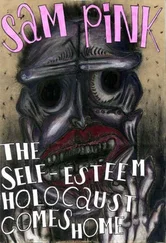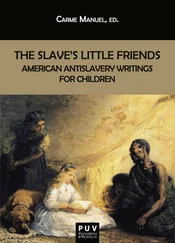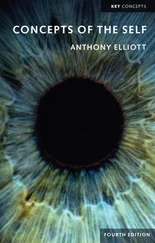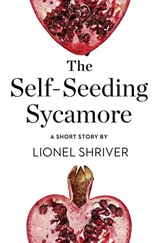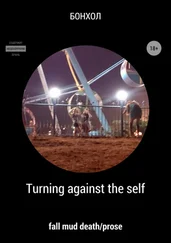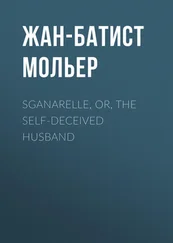Rather than pondering the different autobiographical traditions among black and white writers, William L. Andrews is more interested in exploring what four black and white southern authors from the Mississippi Delta have in common. In his essay “In Search of a Common Identity: The Self and the South in Four Mississippi Autobiographies,” Andrews discusses William Alexander Percy’s Lanterns on the Levee (1941), Richard Wright’s Black Boy (1945), Willie Morris’s North Toward Home (1967), and Anne Moody’s Coming of Age in Mississippi (1968) in order to find a “common identity” among them. Andrews notes that “[e]ach autobiographer conceived of his or her route to achieved selfhood differently” though “[n]one of these routes can afford to bypass the racial order” (43) and solve the “unresolved conflict with the self over one’s attitude toward” the other (42).
Apart from the debate over the different traditions, other perspectives have enriched the discussion of southern autobiography, particularly in the 1990s, with the renewed interest in memoirs and the narrative of the self. Fred Hobson’s seminal work But Now I See: The White Southern Racial Conversion Narrative (1999) presents the autobiographies and memoirs of a large group of white southerners who wrote their personal stories of enlightenment in the form of “racial conversion narratives” in a conscious effort to seek redemption for their racist past during segregation. Their “racial repentance” (2) takes place through confession and after a personal transformation, showing their journey from the darkness of sin to the light and joy the racially born-again white southerner experiences. In these stories of “secular salvation,” so similar to religious conversion as Hobson argues, “[t]he impulse is the same—to witness, to testify” (4) and to offer “a public confession of racial sins” (5). He takes his assumption one step further when he suggests that the white racial conversion narratives of Lillian Smith, Katherine Du Pre Lumpkin, James McBride Dabbs, Pat Waters, Willie Morris and many others are also slave narratives, like that of Frederick Douglass, or “freedom narratives.” “That is,” Hobson explains, “these writers too escape a kind of bondage, flee from the slavery of a closed society, of racial prejudice and restriction, into the liberty of free association, free expression, brotherhood, sisterhood—and freedom from racial guilt” (5). When referring to Lewis P. Simpson’s notion of “the autobiographical impulse” in southern writers, Hobson acknowledges that the canonical figures of the Southern Renaissance did have “the impulse to address race in personal terms . . . but not the desire, and perhaps not the courage, to confront race in personal and autobiographical, not to mention confessional, terms” (13-14). However, as Hobson claims, other less prominent white figures driven by racial guilt, like William Alexander Percy and Ben Robertson, started to address race autobiographically in the early 1940s.
While the autobiographical impulse of southern women writers had already been present in many of the slave narratives, letters and diaries they wrote in the antebellum and the bellum period, with Harriet Jacobs’s Incidents in the Life of a Slave Girl (1861) and Mary Boykin Chestnut’s A Diary from Dixie (1905) as classic examples, their works started to receive scholarly attention only in the 1990s. 3 Lucinda MacKethan starts Daughters of Time: Creating Woman’s Voice in Southern Story (1990) by discussing in Chapter One the letters of Catherine Hammond, a plantation wife, and Harriet Jacobs’s Incidents . In Chapter Two, she reviews the autobiographies of Ellen Glasgow, Zora Neale Hurston and Eudora Welty as “prodigal daughters” who “journeyed away from home and then returned” and whose autobiographies “were conceived and enacted as a means to explore, as well as to complete, the writer’s definition of herself as a writer” (39). Though the following list doesn’t claim to be exhaustive, new approaches to slave narratives and bellum diaries and memoirs published in the 1990s are worth mentioning. Frances Smith Foster’s Written by Herself: Literary Production by African American Women, 1746–1892 (1993) is an example, which expanded on her previous work entitled Witnessing Slavery: The Development of Ante-bellum Slave Narratives (1979). Likewise, Jennifer Fleischner’s Mastering Slavery: Memory, Family and Identity in Women’s Slave Narratives (1996) provides one more perspective on the same topic. Worth mentioning also is Michael O’Brien’s An Evening When Alone: Four Journals of Single Women in the South, 1827-67 (1993), as well as Walter Sullivan’s The War the Women Lived: Female Voices from the Confederate South (1995), which offers a selection of twenty-three Confederate women’s diaries and memoirs, including Mary Chestnut, Cornelia Peake McDonald, Sarah Morgan and Belle Boyd, among others.
Studies that included an increasing multiplicity of southern female voices appeared in the 1990s. Apart from Elizabeth Fox-Genovese’s 1990 essay, included in Berry’s Located Lives , “Between Individualism and Community: Autobiographies of Southern Women” on the autobiographies of black and white southern women, William Brantley’s Feminine Sense in Southern Memoir (1993) is the first book-length study that discusses the autobiographical works of southern women writers. His volume deals with the autobiographies of Lillian Smith, Ellen Glasgow, Eudora Welty, Lillian Hellman, Katherine Anne Porter, and Zora Neale Hurston. The will to modify errors and omissions in some of the articles in Located Lives is what propels Brantley’s volume on southern women writers’ life narratives. Brantley’s aim with this book is not only “to deprovincialize the Southern Renaissance—to redefine it without abstract a priori conditions for what constitutes ‘southernness’” but also “to show how and why this body of writing can be seen as more than a mere foil for their ‘creative’ work” (xi). Brantley notes that “[t]here is a real need, however, to look carefully at the intellectual and autobiographical prose of southern women writers” and to pay attention to the other Souths—the black South and the female South—long excluded from the canon of southern literature traditionally seen as white and male (14). Proof of the diversity of the autobiographical impulse in the South is James H. Watkins’ anthology entitled Southern Selves: From Mark Twain and Eudora Welty to Maya Angelou and Kaye Gibbons, A Collection of Autobiographical Writings (1998), in which he brings together excerpts from thirty-one southern authors, including men and women, black and white, as well as a few Appalachian writers. Though narrower in scope than Brantley’s study, Darlene O’Dell’s volume Sites of Southern Memory: The Autobiographies of Katharine Du Pre Lumpkin, Lillian Smith, and Pauli Murray (2001) offers also racial diversity in her selection of southern women and their autobiographies. O’Dell views the memoirs and autobiographies selected as “sites of personal memory, places where the authors unearth the meanings of their culture’s symbols and rituals” (3), and as “site[s] of regional memory, like the monuments and memorials to Lost Cause memory and like the southern body as a place where regional identity is contested” (6). The autobiographies of Katharine Du Pre Lumpkin and Lillian Smith, along with that of Belle Kearney, are also explored in Jeanne Perreault’s essay, “Southern White Women’s Autobiographies: Social Equality and Social Change” (2008). Perreault focuses on “how each of these writers uses the issue of ‘social inequality,’” which is based on race (32).
Читать дальше

